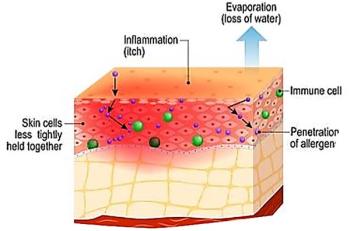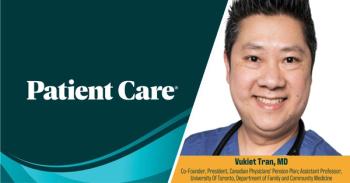
Hot Bronchi Bring a Breath of Fresh Air to Severe Asthmatics
HAMILTON, Ontario -- Adults with severe persistent asthma refractory to high-doses of drugs reacted well to radiofrequency warming, a procedure for opening airways called bronchial thermoplasty.
HAMILTON, Ont., March 28 -- When drugs don't work for severe asthma, a little judiciously applied radiofrequency heat may, reported investigators in the multicenter Asthma Intervention Research (AIR) trial.
After undergoing bronchial thermoplasty, adults with severe persistent asthma refractory to high-doses of asthma drugs had clinically and statistically significant improvements in pulmonary function measures compared with controls, found Gerard Cox, M.B., of McMaster University here, and international colleagues.
One year after treatment, bronchial thermoplasty patients had significantly greater improvements in morning peak expiratory flow, scores on asthma control and quality-of-life questionnaires, percentage of symptoms-free days, symptoms scores, and rescue inhaler use, the AIR investigators reported in the March 29 issue of the New England Journal of Medicine.
Bronchial thermoplasty is an outpatient procedure, performed through a standard bronchoscope, that involves application of controlled thermal energy, via radio waves, to airway walls. The goal is to reduce airway smooth muscle to decrease bronchoconstriction and asthma symptoms.
The effect of the RF energy is to heat the tissue to about 65 degrees C (149 degrees F), a temperature high enough to reduce muscle mass, but low enough to avoid tissue destruction and scarring. In small studies, the technique has improved airway hyper-responsiveness for up to two years in patients with severe, persistent asthma.
The authors randomly assigned 112 adults with a median age of about 40 to medical therapy and bronchial thermoplasty in three sessions, or a control group consisting of medical therapy only. The patients all had moderate or severe persistent asthma requiring daily therapy with inhaled corticosteroids equivalent to more than 200 ?g of beclomethasone (Beconase) and a long-acting ?2-adrenergic agonist of 100 ?g or more of salmeterol (Serevent).
The patients also had airflow obstruction, defined as pre-bronchodilator forced expiratory volume in 1 second (FEV1) of 60% to 85% of the predicted value, and airway hyper-responsiveness, defined by a challenge dose of methacholine required to lower the FEV1 by 20% (PC20) of less than 8 mg/mL.
The primary outcome of the one-year study was the frequency of mild exacerbations, calculated during three scheduled two-week periods of abstinence from long-acting beta-agonists at three, six, and 12 months.
Secondary measures included airflow, airway responsiveness, asthma symptoms, the number of symptom-free days, use of rescue medication, and scores on the Asthma Quality of Life Questionnaire and the Asthma Control Questionnaire.
The authors found that compared with baseline values, the mean frequency per subject per week of mild asthma exacerbations dropped slightly but significantly by -0.16 0.37 compared with controls (0.04 0.29, P = 0.005).
At one year, patients who underwent bronchial thermoplasty also had an increase in morning peak expiratory flow (39.3 48.7, compared with 8.5 44.2 liters per minute).
The thermoplasty patients also had better scores on the Asthma Qualtiy of Life Questionnaire, (1.3 1.0 vs. 0.6 1.1, on a scale of one to seven, with seven being best) and the Asthma Control Questionnaire (a reduction of 1.2 1.0 vs. 0.5 1.0 on a scale of zero to six, with zero being best control).
Patients in the thermoplasty group also had a higher percentage of symptom-free days (40.6% 39.7% compared with 17.0% 37.9%), greater reduction in symptom scores (1.9 2.1 vs. 0.7 2.5, on a scale of zero to 18, with 18 being worst), and required fewer puffs of rescue medication.
There were no significant effects of bronchial thermoplasty on either FEV1 or airway hyper-responsiveness however.
Four patients in the thermoplasty group required a total of six hospitalizations during the treatment period. Four of the hospitalization were for asthma exacerbations, one occurring within 24 hours of treatment, two 30 days after treatment, and one 85 days after treatment. One of the hospitalizations occurred due to a partial collapse of the left lower lobe of the lung two days after treatment, and the remaining one was for pleurisy occurring 43 days after treatment. In the control group, two participants required one hospitalization each; the reasons for hospitalization were not stated.
There were no significant differences in hospitalizations or other adverse events between the groups from six weeks to one year. There were no deaths during the study.
"The effect of bronchial thermoplasty was evident three months after the procedure," the investigators wrote. "The improvements in objective and subject-centered outcomes did not diminish over the course of the study, and the outcomes assessed at one year showed the same degree of improvement as at three months."
In an accompanying editorial, Julian Solway, M.D., of the University of Chicago and Charles G. Irvin, Ph.D., of the University of Vermont cautioned that the therapy still has several hurdles to overcome before it can be accepted as an alternative form of control for persistent asthma.
"Bronchial thermoplasty represents a novel approach to targeting airway smooth muscle, but it ablates airway myocytes only in bronchi 3 mm or larger in diameter, which can be treated directly," they wrote. "For this reason, and because of the considerable effort involved (three separate bronchoscopic procedures, each with a small but significant risk of complications), notable adverse effects (in the short term, at least), and likely expense, bronchial thermoplasty will probably need further refinement if it is to emerge as a widely applicable, practical treatment for moderate or severe asthma."
Newsletter
Enhance your clinical practice with the Patient Care newsletter, offering the latest evidence-based guidelines, diagnostic insights, and treatment strategies for primary care physicians.































































































































































































































































































































